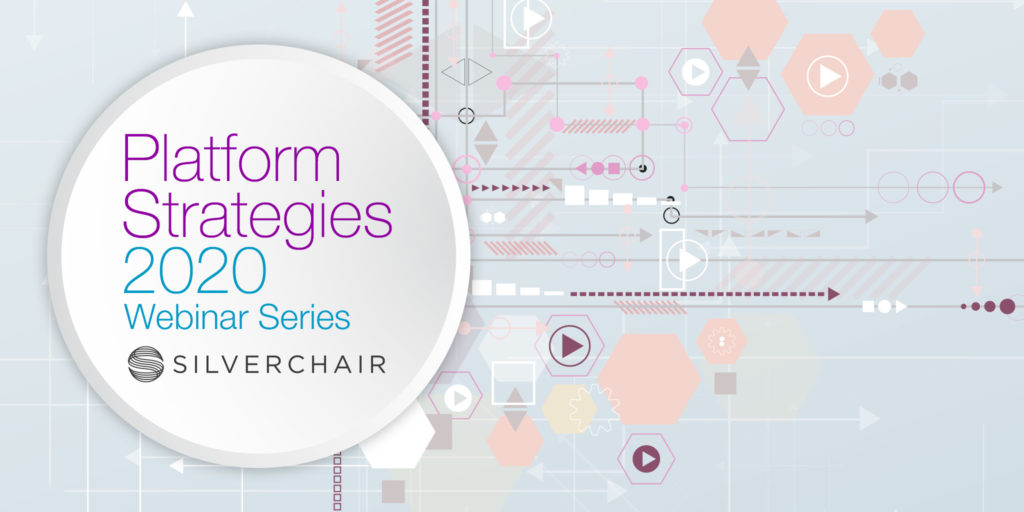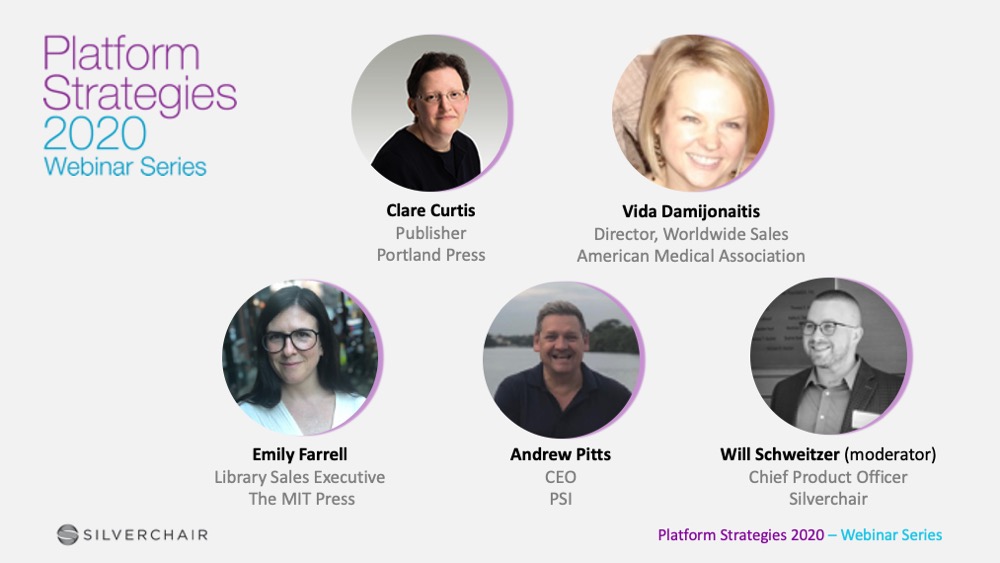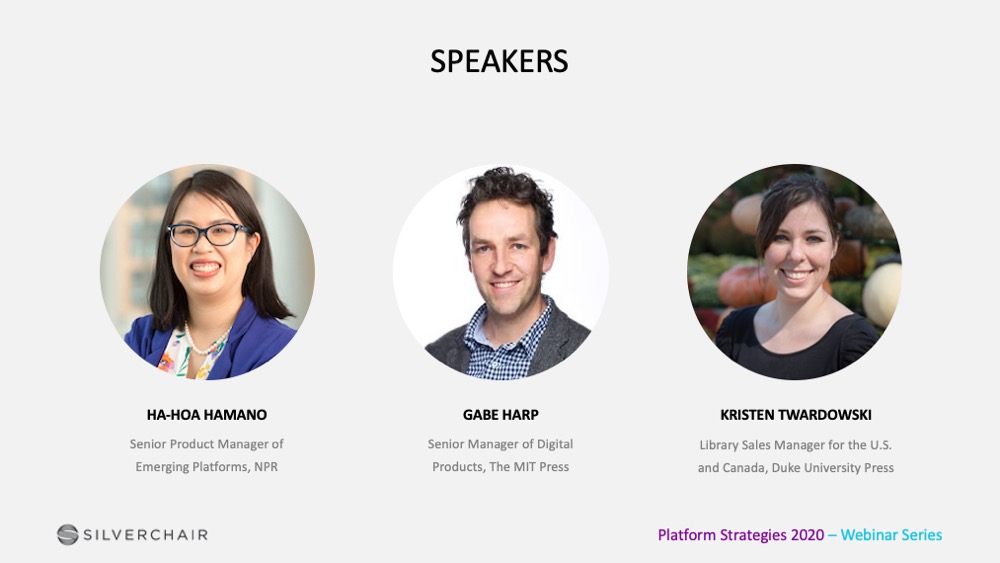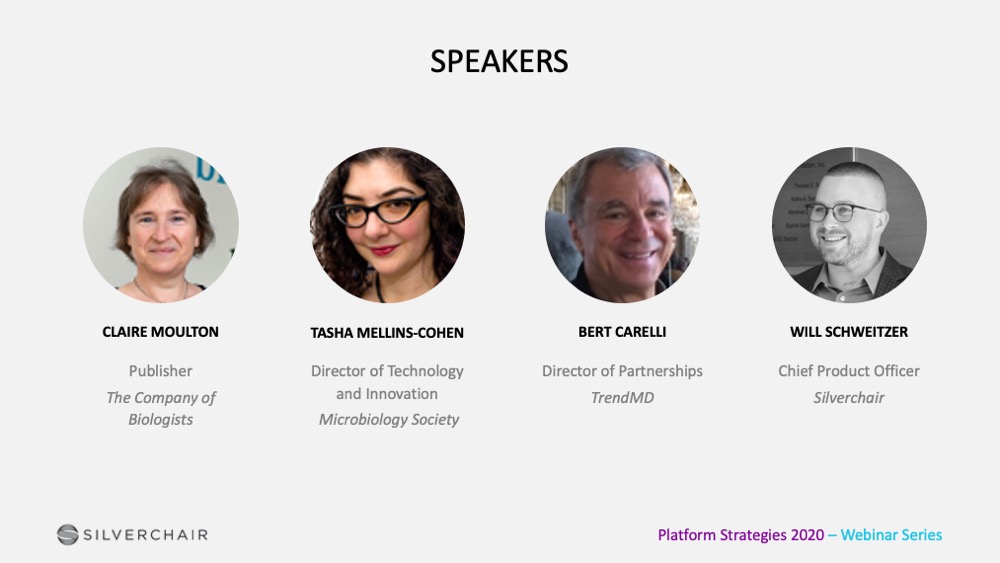
Opening Content for COVID: Transitioning models, security, and the future of subscriptions after the pandemic
JULY 2020
To enable researchers, students, and faculty in the wake of the COVID-19 pandemic, many publishers removed paywalls from their content. As those free access periods are set to expire, how are publishers handling the reinstitution of paywalls, both logistically and from a messaging standpoint? How has this period changed customer relationships and how will it change future sales approaches? And how has the race to open content affected intellectual property protections and guarding against cyber criminals like SciHub? A panel of publishers and service partners who are working through these challenges share their approaches.
- Emily Farrell, Library Sales Executive, The MIT Press
- Clare Curtis, Publisher, Portland Press
- Vida Damijonaitis, Director, Worldwide Sales, American Medical Association
- Andrew Pitts, CEO, PSI
- Will Schweitzer, Chief Product Officer, Silverchair (moderator)
Further reading:
- ALPSP Guest Blog: Opening Content for COVID: What Comes Next? (August 2020)
- Lasting Effects: What the Pandemic Will & Won’t Change (September 2020)
Finding New Audiences for Your Content: What Publishers Can Learn from Public Radio
SEPTEMBER 2020
As audiences or user bases change, many publishers are adapting by aggregating or syndicating content, adding in product features, or investing in marketing technology. As the Senior Product Manager for Emerging Platforms at NPR, Ha-Hoa Hamano spends her time thinking through how to adapt NPR’s content delivery and products to maintain or reach new audiences. How has NPR grown and stayed connected with its audience as technology has taken most of us away from Morning Edition during our commute? Hamano discussed their strategy, joined by Gabe Harp (MIT Press) and Kristen Twardowski (Duke University Press), who offered a publisher perspective on these challenges and what they’ve learned along the way.
- Ha-Hoa Hamano, Senior Product Manager, Emerging Platforms, NPR
- Gabe Harp, Senior Manager for Digital Products, The MIT Press
- Kristen Twardowski, Library Sales Manager for the U.S. and Canada, Duke University Press
- Jake Zarnegar, Chief Business Development Officer, Silverchair (moderator)
If curation is the future, what actually works?
NOVEMBER 2020
Curation has always been at the heart of scholarly publishing, from the peer review process through to publishing and measuring impact, with myriad qualitative and quantitative judgements taking place in between. In early 2020, an award funded by the Wellcome Trust to “support learned society publishers who want to explore new ways of signaling the significance of published research outputs in an open and transparent manner,” signaled the continued importance of publishers’ curatorial function in scientific communication. But there’s so many ways to approach curation—automated or manually, expert or machined—what really works and engages readers? And what systems serve as prerequisites for these approaches? Industry veterans discuss how they’ve engaged their communities and what comes next.
- Bert Carelli, Director of Partnerships, TrendMD
- Tasha Mellins-Cohen, Director of Technology and Innovation, Microbiology Society
- Clare Moulton, Publisher, The Company of Biologists
- Will Schweitzer, Chief Product Officer, Silverchair (moderator)


